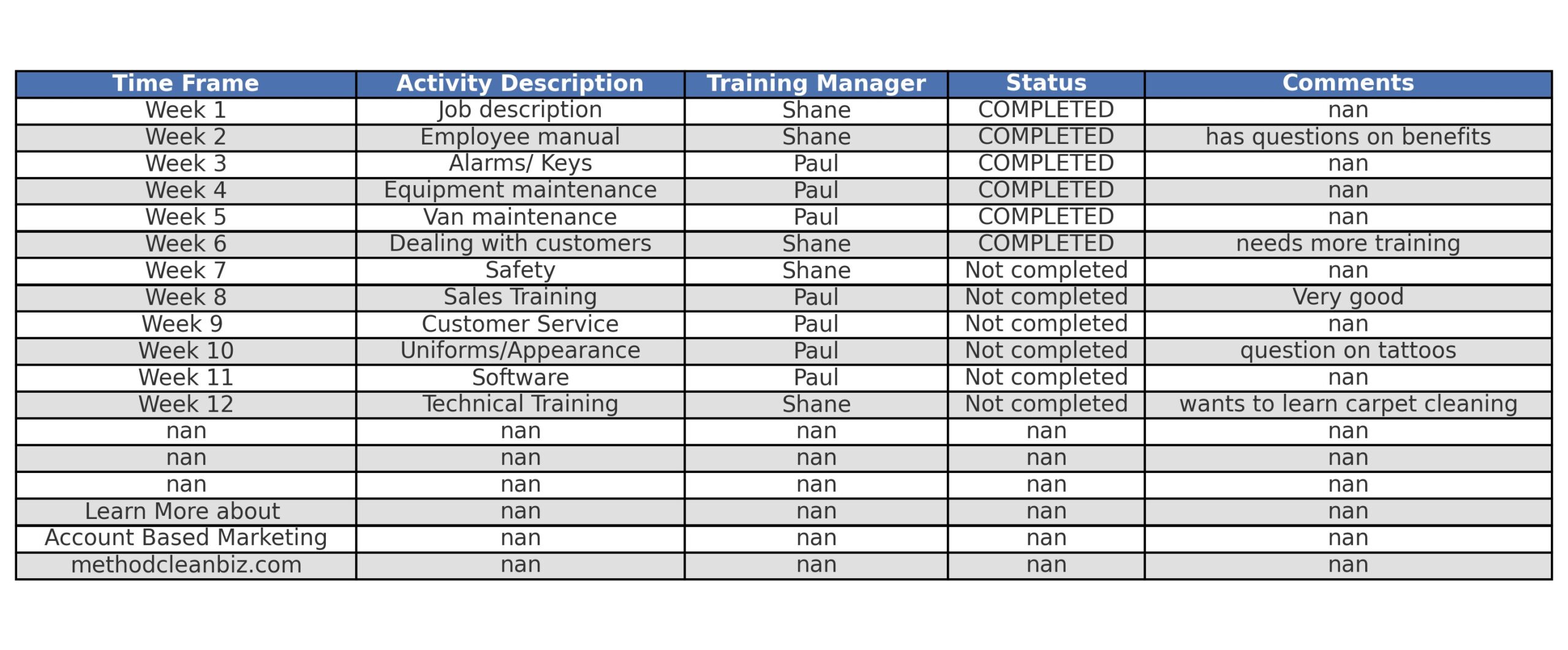Cleaning Subcontractor vs Employee: Compare Costs, Compliance & ROI
One of the most important decisions you’ll face as a cleaning business owner is: “Should I hire full-time employees or work with subcontractors?”
💸 This decision impacts your payroll costs, client satisfaction, training systems, and how fast you can grow. It also affects your long-term risk — from insurance and tax compliance to team retention and supervision.
📋 We’ve worked with dozens of commercial cleaning companies who’ve navigated this exact challenge. And there’s no one-size-fits-all answer — but there are clear patterns and tools that can help you decide.
📚 If you’re still building your training or org chart, you might also want to read:
👉
Ultimate Janitorial & Cleaning Training Manual
👉
Sample Management Structure for Cleaning Services
- 📊 A free cost & ROI calculator
- 📋 A hiring decision checklist
- ❓ Answers to common questions from cleaning business owners
🧮 What’s the Real Cost Difference Between Cleaning Employees and Subs?
When comparing subcontractors and full-time employees, the hourly rate is only part of the equation. You also need to consider taxes, insurance, training, and administrative overhead.
Here’s a side-by-side comparison to help you see the bigger picture:
| Cost Category | Employee | Subcontractor |
|---|---|---|
| Base Hourly Pay | $18–$22 | $23–$28 |
| Payroll Taxes & Insurance | +20–30% | Included in rate |
| Uniforms & Equipment | Company-provided | Usually self-supplied |
| Training & Onboarding | Required & tracked | Light or none |
| Supervision Needed | Daily or weekly | Minimal (if experienced) |
| Admin Support | Time tracking, payroll, benefits | 1099 invoicing |
💰 Subcontractor vs. Employee Cost Calculator (Fixed Overhead)
This calculator compares the total cost of hiring employees vs. subcontractors — including payroll taxes and fixed monthly business costs for employees.
Employee True Hourly Rate: --
Weekly Cost (Employee): --
Monthly Total (Employee): --
Weekly Cost (Subcontractor): --
Monthly Total (Subcontractor): --
Monthly Cost Difference: --
Summary:
--
⚖️ Other Variables: What Numbers Don’t Show You
📑 Worker Classification
Misclassifying a subcontractor as an employee can lead to serious IRS penalties and audits. Make sure roles are clearly defined and legally compliant.
👀 Supervision Needs
Employees typically need more daily oversight. Subcontractors are more hands-off but may lack alignment with your brand standards.
🤝 Staff Loyalty & Training
Employees tend to stay longer when trained and supported. Subcontractors offer flexibility, but can rotate out more often.
📋 Use This Checklist Before You Hire or Contract
Before deciding whether to hire an employee or subcontract a cleaning team, review this list to ensure you're choosing the best fit for your operations.
| Consideration | Employee | Subcontractor |
|---|---|---|
| Do you need consistent scheduling? | ✅ | ⚠️ |
| Can you provide long-term hours? | ✅ | 🚫 |
| Do you have admin systems in place? | ✅ | Not required |
| Is control over process/branding important? | ✅ | ⚠️ |
| Is speed and flexibility more important? | ⚠️ | ✅ |
| Do you want long-term team loyalty? | ✅ | 🚫 |
📘 What's Inside a Great Cleaning Employee Handbook?
✅ Clear Job Roles & Expectations
A strong handbook defines responsibilities clearly — reducing confusion and improving accountability from day one.
🧽 Safety & Conduct Policies
Set the tone for professional behavior, safety procedures, and handling customer property with care.
📈 Onboarding & Growth
Make training smoother with a written plan and outline how employees can grow within your company.
🧠 How to Decide Between Hiring Employees or Subcontractors
Use this step-by-step process to evaluate whether subcontractors or employees are a better fit for your cleaning business.
- Step 1: List Your Workload & Schedule Needs
Do you need staff daily, weekly, or for one-time jobs? Employees are better for consistent work; subcontractors are flexible for project-based contracts. - Step 2: Evaluate Your Admin Systems
Do you have payroll, HR, and onboarding in place? If not, subcontractors can reduce admin burden — but you’ll lose some control. - Step 3: Compare Financial Costs
Use our calculator above to compare total labor costs, including payroll taxes, rent, equipment, and training time. - Step 4: Consider Compliance Risk
Misclassifying a subcontractor as an employee can lead to audits or fines. Be sure your setup matches legal guidelines. - Step 5: Think About Long-Term Goals
Do you want to build a stable team and brand culture? Employees allow you to invest in people. Subcontractors make scaling fast and lean.
❓ Frequently Asked Questions
Subcontractors often cost more per hour, but they don’t require payroll taxes, uniforms, or admin support — making them more cost-efficient in some cases.
Yes! Many cleaning companies use subcontractors for special jobs or overflow, while employees handle regular accounts and brand-building work.
If your subcontractors behave like employees (set schedule, wear your logo, use your tools), you could face fines or audits. Learn more in our training manual post.
Typically yes. Employees benefit from training, check-ins, and performance reviews — which means you’ll need strong management systems in place.
If you want to build a loyal team and a solid brand, employees are often the better route. Subcontractors are great for scaling quickly without admin overhead.
Want More Cleaning Clients from Google? We Can Help.
From SEO-ready websites to complete local marketing campaigns, we help cleaning businesses generate leads, build trust, and grow faster. Whether you’re starting fresh or upgrading your online presence — let’s build something that actually works.

